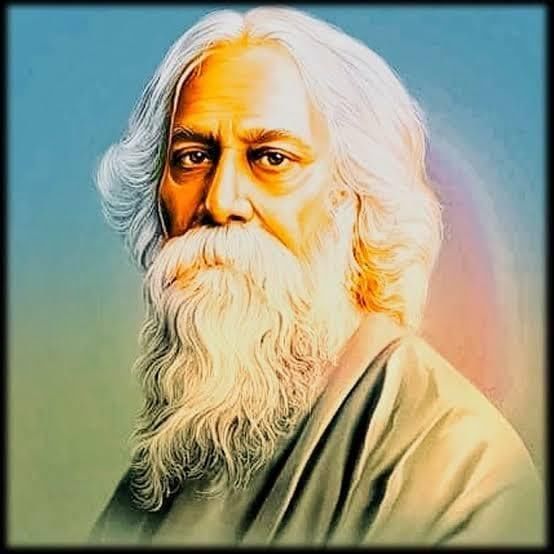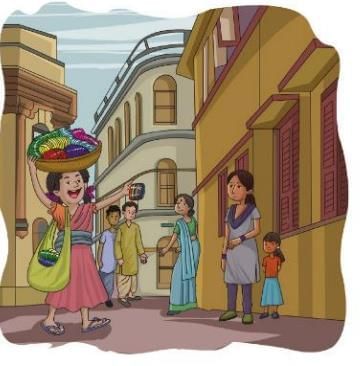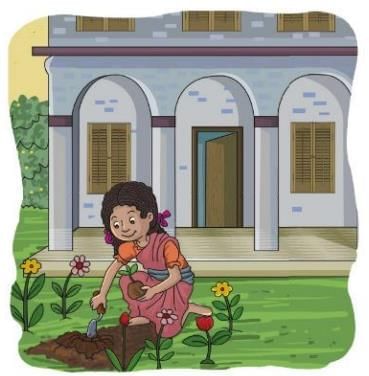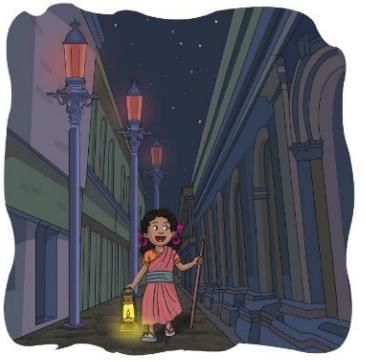Summary: Vocation | English Class 6 ICSE PDF Download
| Table of contents |

|
| Introduction |

|
| Key Points of the Poem |

|
| Summary |

|
| Message |

|
Introduction
The poem "Vocation" by Rabindranath Tagore is a beautiful piece written from the perspective of a young child. The child observes different workers—a hawker, a gardener, and a watchman—during the day and admires the freedom and joy in their work. Through the child's innocent eyes, the poem explores the idea of a vocation, which means a job that feels right and fulfilling for a person. The child dreams of having the same freedom these workers enjoy, expressing a wish to live a life without strict rules or restrictions. The poem uses simple language to convey the child's curiosity and imagination, making it easy for young readers to connect with the theme of finding joy in work.
 Rabindranath Tagore
Rabindranath Tagore
Key Points of the Poem
- The poem "Vocation" by Rabindranath Tagore is written from the perspective of a young child who observes different people working during the day.
- The child notices a hawker, a gardener, and a watchman, each doing their jobs in their own unique way.
- The poem highlights the child's fascination with the freedom and independence these workers seem to enjoy in their daily tasks.
- It explores the idea of vocation, which is a type of work that feels suitable for a person, and the child expresses a desire to experience this freedom by wishing to be like these workers.
- The poem encourages readers to think about the difference between a vocation and a profession and whether it is good for them to be the same for a person.
Summary
Stanza 1
When the gong sounds ten in the morning and I walk to school by our lane,
Every day I meet the hawker crying, 'Bangles, crystal bangles!'
There is nothing to hurry him on, there is no road he must take,
no place he must go to, no time when he must come home.
I wish I were a hawker, spending my day in the road, crying, 'Bangles, crystal bangles!"
The poem begins with the child walking to school when the school bell, called a gong, rings at ten in the morning. Every day, the child meets a hawker who walks through the streets calling out to sell crystal bangles. The hawker has no strict schedule, no fixed route to follow, and no specific time to return home, which makes his life seem very free. The child admires this freedom and wishes to be a hawker, imagining a day spent roaming the roads and calling out to sell bangles.

Stanza 2
When at four in the afternoon I come back from the school,
I can see through the gate of that house the gardener digging the ground.
He does what he likes with his spade, he soils his clothes with
dust, nobody takes him to task if he gets baked in the sun or gets wet.
I wish I were a gardener digging away at the garden with nobody to stop me from digging.
In the afternoon, at four o’clock, the child returns from school and sees a gardener working through the gate of a house. The gardener uses his spade to dig the ground and gets his clothes dirty with dust, but no one scolds him for it. He works freely, whether he gets hot under the sun or wet from rain, and no one stops him from doing his job. The child is attracted to this independence and wishes to be a gardener, enjoying the freedom to dig in the garden without any restrictions.

Stanza 3
Just as it gets dark in the evening and my mother sends me to bed,
I can see through my open window the watchman walking up and down.
The lane is dark and lonely, and the street-lamp stands like a giant with one red eye in its head. a
The watchman swings his lantern and walks with his shadow at his side, and never once goes to bed in his life.
I wish I were a watchman walking the streets all night, chasing the shadows with my lantern.
As evening falls and it gets dark, the child’s mother sends the child to bed. Through the open window, the child sees a watchman walking up and down the lonely lane with a lantern. The street-lamp is described as a giant with one red eye, adding a magical feel to the scene. The watchman swings his lantern and walks with his shadow, working all night without ever going to bed, which fascinates the child. The child wishes to be a watchman, imagining the adventure of walking the streets at night and chasing shadows with a lantern.

Message
The poem teaches children about the beauty of finding joy in work that feels right for them, known as a vocation. It shows how the child dreams of freedom and independence, inspiring readers to think about what kind of work they might love. It also encourages a discussion on whether a person’s vocation and profession should be the same, promoting self-reflection and understanding of personal interests.
New Words with Meanings
- Vocation: A type of work that you feel you are suitable for.
- Gong: A round piece of metal hung in a frame and hit with a stick to produce a sound, often used as a bell, especially in schools.
- Hawker: Someone who sells things from street to street.
- Crystal: A type of high-quality glass.
- Soils: Makes something dirty.
- Takes him to task: Scolds him.
- Gets baked: Becomes very hot (here, refers to getting very hot under the sun).
|
38 docs|19 tests
|
FAQs on Summary: Vocation - English Class 6 ICSE
| 1. What is vocation insurance and why is it important for professionals? |  |
| 2. What types of coverage are typically included in vocation insurance policies? |  |
| 3. How do exam requirements for vocation insurance vary by profession? |  |
| 4. What are common factors that influence the cost of vocation insurance? |  |
| 5. Can vocation insurance be customized based on individual needs? |  |



















